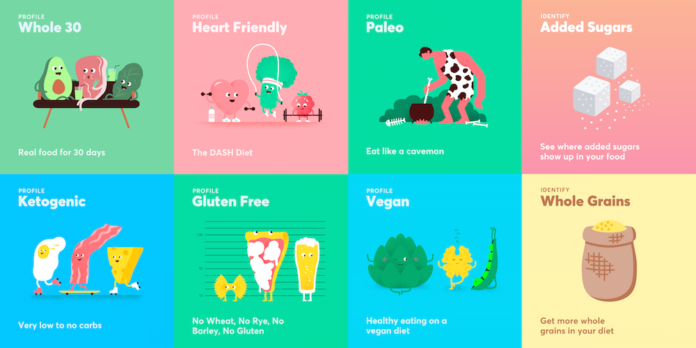
Food labels are contentious, as evidenced by the recent heated fights over mandatory labeling for food containing GMOs or added sugars.
They’re also confusing. Even when label claims are present, consumers don’t know what to make of them or how to judge how well the foods fit their diet. A recent study by Label Insight found that almost half of consumers (48%) feel “not informed at all” after reading product labels. Two-thirds of the people who read labels find it hard to tell whether the foods fit their dietary needs.
In an environment where consumers value transparency and want to know what they’re eating, those numbers are pretty grim.
 This is a situation that Pinto hopes to change. Earlier this month, the startup tech company launched a new phone app that creates personalized food labels based on an individual’s dietary needs and preferences. Using the app, consumers can easily see what’s in their food — from specific nutrients and ingredients to allergens and added sugars. They can search for products that fit well into specialized diets, like gluten-free, paleo, and diabetes-friendly, as well as for products that have certain characteristics, such as “contains probiotics,” “no high fructose corn syrup,” and “good source of iron.”
This is a situation that Pinto hopes to change. Earlier this month, the startup tech company launched a new phone app that creates personalized food labels based on an individual’s dietary needs and preferences. Using the app, consumers can easily see what’s in their food — from specific nutrients and ingredients to allergens and added sugars. They can search for products that fit well into specialized diets, like gluten-free, paleo, and diabetes-friendly, as well as for products that have certain characteristics, such as “contains probiotics,” “no high fructose corn syrup,” and “good source of iron.”
They app also scales the recommended daily values on nutrition labels for consumers who aren’t eating the “standard” 2,000 calories/day, and allows consumers to adjust their intake of nutrients like sodium.
Pinto’s story started at NYU, where CEO Sam Slover was working on his thesis. That’s where he met Jessica Wright, the company’s head of operations.
“Sam was interested in tracking everything he purchased from the grocery store over a 3-month period,” Wright said in an interview. “He input that into an organized format and created a data visualization which let him know what were the most common ingredients in the food that he purchased — where the ingredients came from, what nutrients he was getting a lot of, and what nutrients he needed to get more of. From this thesis project, he created, essentially, a new label — his own personalized label that provided him with the information he really wanted to know about food.”
 Slover’s project came to the attention of Whole Foods and things took off from there. “Since then, we’ve been working with several large retailers, as well as Kroger and other large CPGs, to take information, organize it, and generate product attributes from this information. We could look at any product right now and from the data we can say, for example, that it is high-protein, or that it fits with a kidney-friendly diet, or that it doesn’t have any added sugars.”
Slover’s project came to the attention of Whole Foods and things took off from there. “Since then, we’ve been working with several large retailers, as well as Kroger and other large CPGs, to take information, organize it, and generate product attributes from this information. We could look at any product right now and from the data we can say, for example, that it is high-protein, or that it fits with a kidney-friendly diet, or that it doesn’t have any added sugars.”
The information the app provides is gleaned from the nutrition facts label, claims made on the packaging, and algorithms developed by Pinto’s team of engineers and registered dietitians. Currently, their database has nutritional information for over 100,000 food products, which represent about 85% of the total market.
The company’s goal for the data is twofold. First, they want to classify this information for consumers so they can better understand food labels.
But the technology has practical applications for retailers and manufacturers as well. Wright explains: “[We’re] providing retailers with information about their products that will help them ultimately understand who their shoppers are and what they’re buying. They can leverage information to inform product inventory.”
This same information can help manufacturers develop new products. “Those insights can inform research and development of new products that are more aligned with consumer trends and what they’re looking for in terms of attributes found in a specific type of product,” Wright says.
Ultimately, what it comes down to is transparency for everyone. Consumers will be able to make more informed choices about their food, and manufacturers and retailers will be able to better provide their customers with the types of products they’re looking for when they head to the grocery store.







